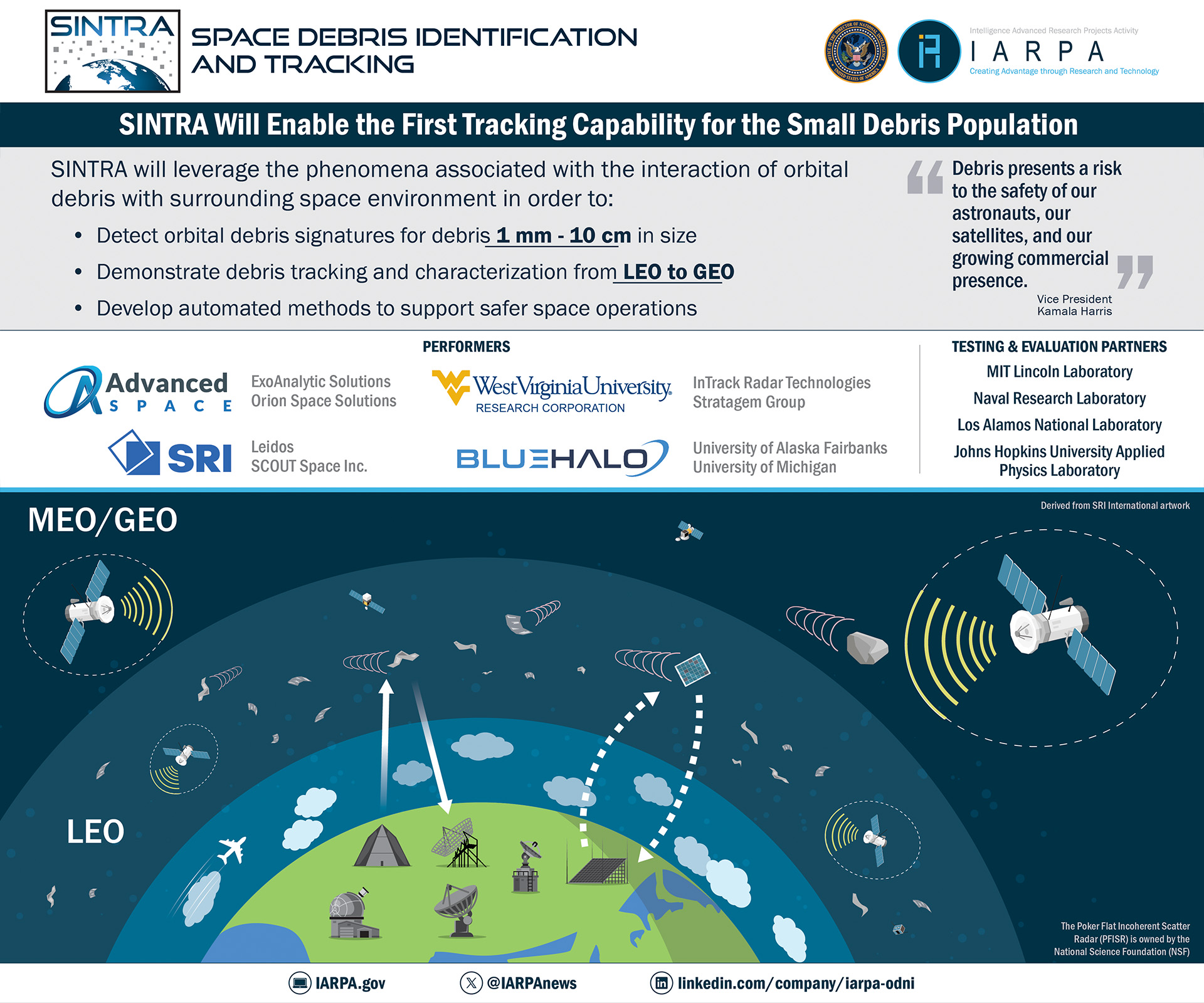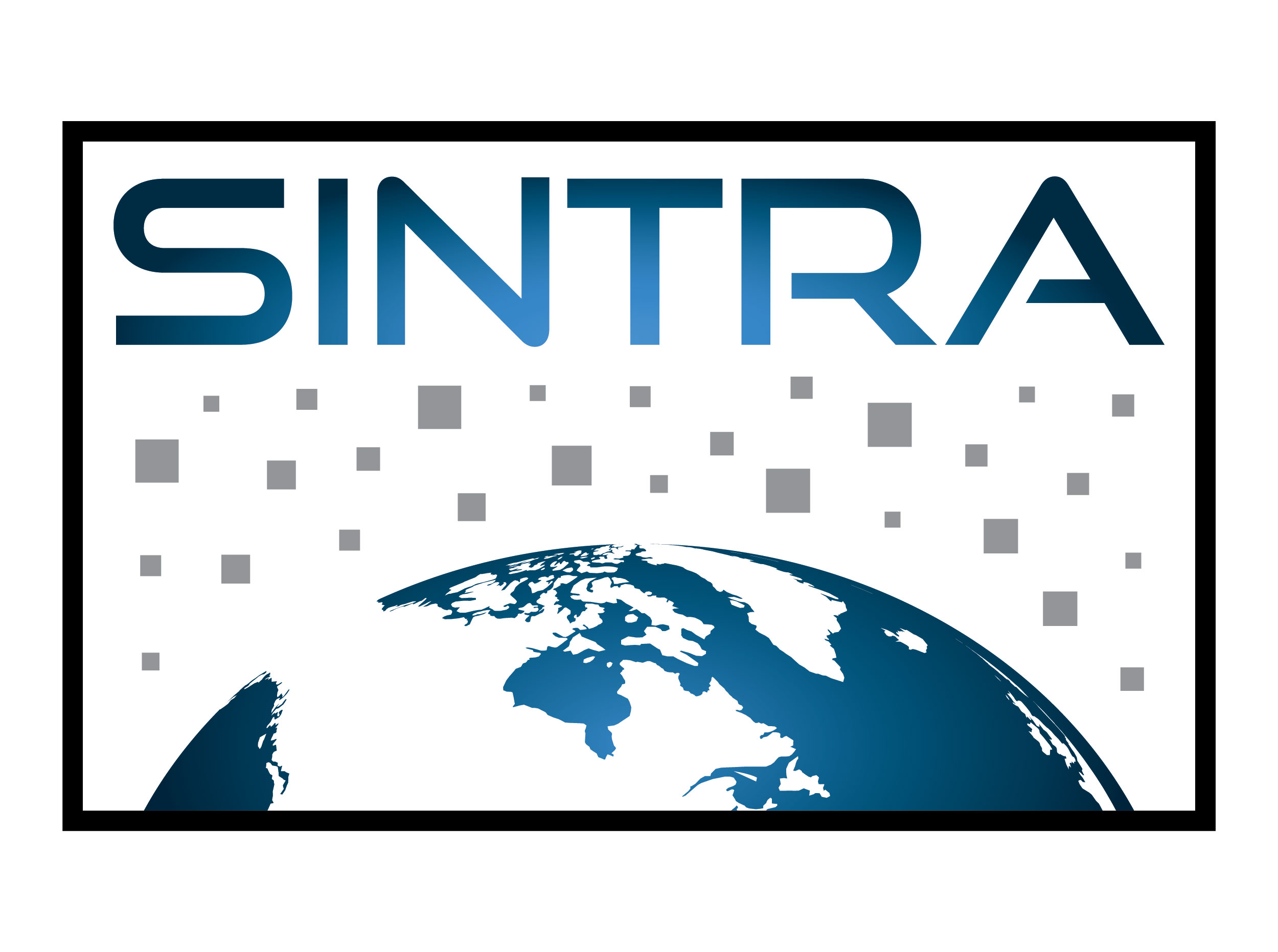INTELLIGENCE VALUE
The IARPA SINTRA program seeks to understand the interaction of orbital debris with the surrounding space environment, and whether the resulting phenomena can be used for the detection, tracking, and characterization of lethal non-trackable orbital space debris. The detection of lethal non-trackable orbital debris would enable safer operation of our valuable government and commercial space assets.
SUMMARY
The IARPA SINTRA program aims to investigate the interaction of orbital debris with the surrounding space environment and drive the state of the art to detect, track, and characterize lethal non-trackable orbital space debris. Space debris poses a risk to all space missions, including those of the Intelligence Community (IC). With an average low Earth orbit (LEO) impact velocity of 22,500 MPH, even the smallest of debris can cause significant damage. Currently, there are over 100 million objects greater than 1 mm orbiting the Earth, however, less than 1 percent of debris that can cause mission-ending damage are currently tracked. Due to the dynamic nature of the near-Earth space environment, predicting the trajectory of the debris is extremely difficult necessitating persistent monitoring. While debris larger than 10 cm can be detected and tracked, smaller debris cannot be tracked using current capabilities. Therefore, there is an increased interest in tracking debris less than 10 cm. The detection, tracking, and characterization of lethal non-trackable space debris would support the safe operation of valuable space assets worldwide.
SINTRA is planned as a 48-month multi phase program, which will advance the state of the art for sensors capable of detecting orbital debris signatures and develop automated methods for signature analysis and debris tracking. These advances will help characterize orbital debris size, density, and mass, while reducing the uncertainties associated with their orbital predictions. If successful, SINTRA would enable the first tracking capability for the small debris population, reducing risk to worldwide space operations.
Program Manager Dr. Alexis Truitt, a former NASA Hubble researcher turned IARPA PM, talks about the SINTRA Program.

Proposers' Day Briefing
SINTRA Proposers' Day Briefing
HYBRID PROPOSERS' DAY INFORMATION:
SINTRA Proposers' Day: 10:30am-5:00pm EDT 10 August 2022

